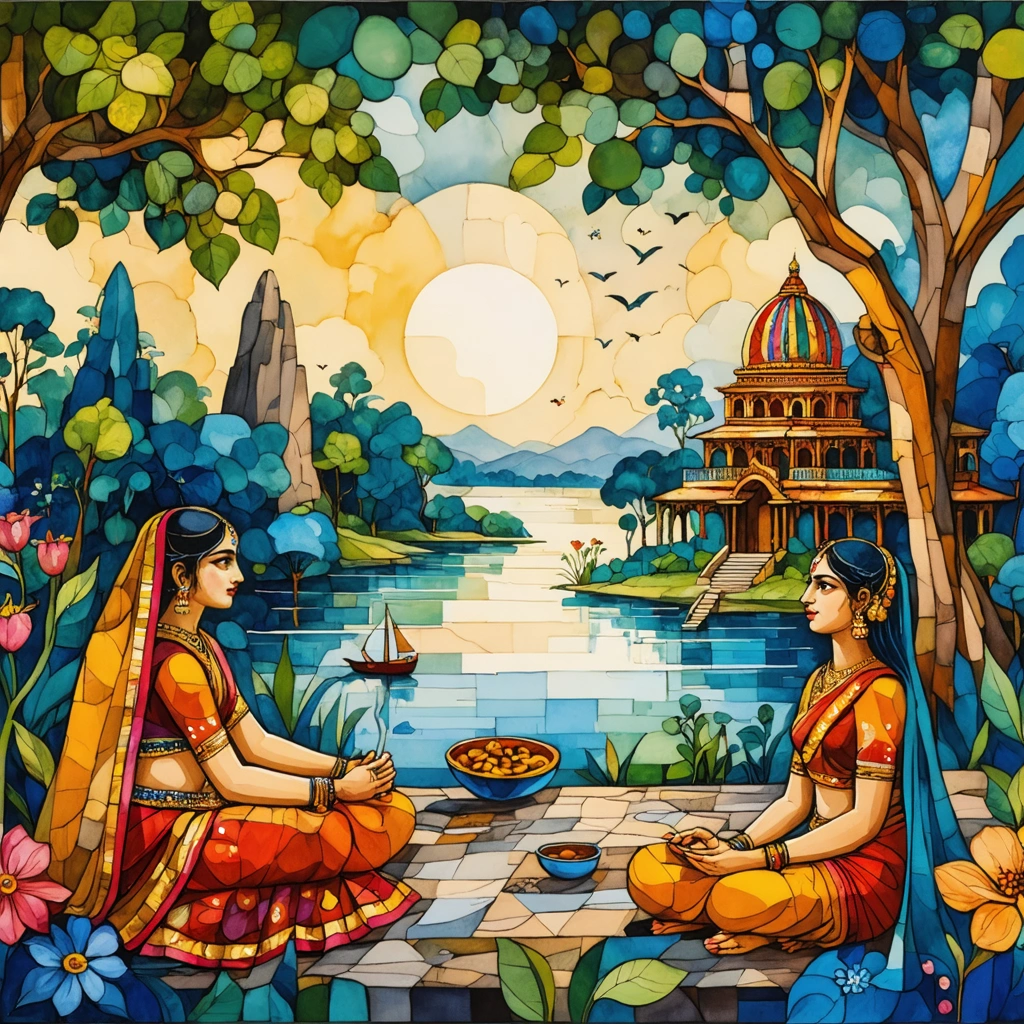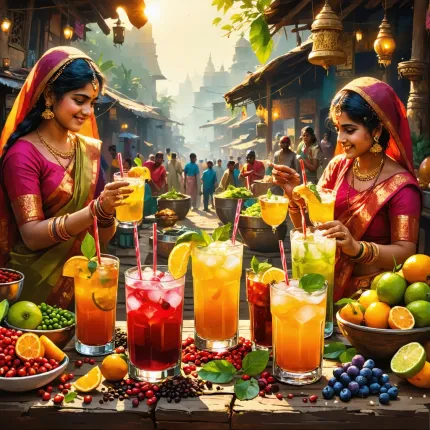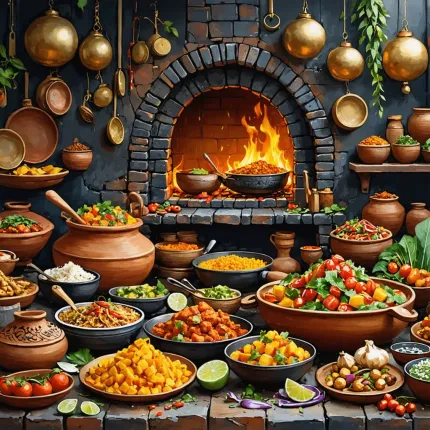
When Tradition Meets Today: The Pulse of India’s Regional Art Forms
Imagine walking through a bustling Indian marketplace, where the aroma of spices mingles with the vibrant colors of hand-painted textiles, each stroke telling a story centuries old. In 2025, India’s regional art forms—like Kalamkari, Tanjore painting, and Pattachitra—are not just relics of a bygone era; they are living, breathing parts of communities that shape identities, fuel economies, and foster cultural pride. Yet, as urbanization and globalization spread their shadows, many of these artistic traditions face an uncertain future. How do these age-old crafts hold their ground in the fast-paced modern world? More importantly, what ripple effects do they have on the communities that nurture them?
The role of these art forms extends beyond mere aesthetics. They are the lifeblood of countless artisans, the custodians of cultural heritage, and powerful catalysts for social cohesion. Let’s delve into the intriguing Kalamkari community impact, explore the enduring legacy of Tanjore painting community impact, and unravel the vibrant tales behind Pattachitra community impact. Understanding these dynamics offers more than just appreciation; it reveals how art sustains communities and how communities, in turn, breathe life into art.
Threads of Impact: Why Regional Arts Matter More Than Ever
It’s easy to admire a beautiful painting or a finely crafted textile, but have you ever paused to consider who creates these masterpieces and what their craft means to their neighbors, families, and future generations? The story of Kalamkari, for example, is not just about delicate hand-painted fabric but about a centuries-old skill passed down through generations along the banks of the Godavari river. The Kalamkari community impact is profound: it supports livelihoods in rural Andhra Pradesh, empowers women artisans, and keeps alive a narrative that connects spirituality and everyday life.
Similarly, the Tanjore painting community impact is a tale of resilience and revival. Originating from Tamil Nadu’s historical heartland, this art form is renowned for its rich colors, intricate gold foil work, and religious themes. But behind the glittering canvases lies a community of artisans who have adapted to changing demands, blending tradition with contemporary markets, and fostering cultural tourism that revitalizes local economies.
Then there’s Pattachitra, a folk painting style from Odisha and West Bengal, whose community impact resonates through its storytelling prowess. Each scroll or panel is a vibrant saga, often depicting mythological tales, that not only preserves ancient lore but also provides economic sustenance to rural villages. The Pattachitra artisans’ ability to sustain their craft amid modernization pressures highlights how art can be a bulwark against cultural erosion.
- Kalamkari: Empowers rural artisans and sustains cultural rituals.
- Tanjore Painting: Revives heritage while boosting artisan incomes.
- Pattachitra: Preserves mythological narratives and supports village economies.
But with such rich legacies at stake, the challenge remains clear: how can these artistic traditions continue to thrive, and what role do communities play in this delicate balance? The answer lies in understanding the multifaceted community impact—economic, social, and cultural—that these art forms wield today.
Looking Ahead: Embracing the Community Impact of Regional Arts in 2025
As we step into 2025, the conversation around India’s regional art forms is evolving. It’s no longer just about preserving art for art’s sake but about harnessing its community impact to drive sustainable development, gender equality, and cultural diplomacy. Governments, NGOs, and private enterprises are increasingly collaborating with artisan communities to ensure that Kalamkari, Tanjore painting, and Pattachitra do not become endangered crafts but continue to be vibrant expressions of India’s pluralistic identity.
In this article, we will journey through the heartlands of these art forms, uncovering stories of artisans who are redefining tradition, explore initiatives that amplify their community impact, and consider how consumers and connoisseurs alike can play a part in this cultural renaissance. Whether you are an art lover, a policymaker, or someone curious about the intersections of culture and community, this exploration will leave you with a deeper appreciation of how regional art forms in India are much more than artistic expressions—they are engines of community vitality and resilience.
So, are you ready to savor the vibrant, living legacy of India’s regional arts and understand their profound community impact in 2025? Let’s dive in.

Regional Art Forms’ Community Impact: Savor the Community Impact of Artistic Traditions of India’s Regions in 2025
How do regional art forms like Kalamkari, Tanjore Painting, and Pattachitra influence their local communities in India?
India's rich tapestry of regional art forms not only showcases exceptional craftsmanship but also plays a vital role in shaping the socio-economic and cultural fabric of local communities. Artistic traditions such as Kalamkari, Tanjore Painting, and Pattachitra are deeply intertwined with the identities of their respective regions, influencing livelihoods, cultural preservation, and tourism.
Kalamkari Community Impact: Kalamkari, a hand-painted or block-printed textile art originating from Andhra Pradesh and Telangana, sustains thousands of artisans engaged in this centuries-old craft. The community impact here is multifaceted:
- Economic Empowerment: Kalamkari artisans, often from marginalized backgrounds, gain steady employment through both domestic and international markets. The rise in demand for eco-friendly and hand-crafted products in 2025 has further boosted their income.
- Cultural Preservation: The art form serves as a living narrative of mythological stories and regional folklore, keeping traditions alive for younger generations.
- Community Cohesion: Kalamkari workshops and cooperatives foster communal bonds, encourage skill sharing, and promote gender inclusion, with many women artisans actively participating.
Tanjore Painting Community Impact: Hailing from Tamil Nadu, Tanjore paintings are known for their rich colors, surface richness, and compact composition, often depicting Hindu gods and goddesses. The community impact includes:
- Economic Stability: Artisans practicing Tanjore painting have seen a resurgence in demand due to renewed interest in traditional art in home decor and cultural gifting, leading to increased income opportunities.
- Skill Transmission: Workshops and government-supported initiatives in 2025 focus on training younger artists, preserving the intricate techniques involving gold foil and natural dyes.
- Cultural Identity and Pride: The paintings reinforce regional pride, serving as symbols of Tamil Nadu’s heritage and inspiring local festivals and exhibitions.
Pattachitra Community Impact: Originating from Odisha and West Bengal, Pattachitra is a traditional scroll painting style with mythological themes. Its community impact manifests in:
- Artisan Livelihoods: Pattachitra artists often come from families that have practiced this art for generations. In 2025, digital marketing platforms have opened new sales channels, increasing their revenue streams.
- Tourism Boost: Villages known for Pattachitra attract tourists seeking authentic cultural experiences, fueling local economies through homestays and craft markets.
- Educational Outreach: Initiatives to incorporate Pattachitra art into school curriculums and community centers help sustain knowledge transfer and community engagement.
Why is understanding the community impact of these regional art forms crucial in 2025?
Understanding the community impact of Indian regional art forms like Kalamkari, Tanjore Painting, and Pattachitra is essential for multiple reasons:
- Sustainable Development: Supporting these arts promotes sustainable development by providing eco-friendly livelihoods and reducing rural unemployment.
- Cultural Heritage Conservation: By valuing the community impact, policymakers and cultural institutions can prioritize funding and protections for endangered art forms and their practitioners.
- Social Inclusion: Many artisan communities belong to marginalized sections of society; recognizing their art’s impact fosters social equity and empowerment.
- Global Recognition: Enhanced understanding helps artists access global markets, thus elevating India’s cultural diplomacy and soft power.
How are modern initiatives enhancing the community impact of Kalamkari, Tanjore Painting, and Pattachitra?
Recent initiatives in 2025 have bolstered the community impact of these regional arts through:
- Government Schemes: Financial aid, skill development programs, and marketing support under schemes like the Ministry of Textiles' Handloom and Handicrafts programs are empowering artisans.
- Digital Platforms: E-commerce portals and social media campaigns have widened market reach, enabling artisans to sell directly to consumers worldwide.
- Collaborations: Partnerships with designers, NGOs, and cultural institutions help innovate product lines while respecting traditional aesthetics, increasing artisan income.
- Community Cooperatives: Formation of cooperatives ensures fair wages, better working conditions, and collective bargaining power.
What challenges do these art communities face despite their cultural significance and economic contributions?
Despite their importance, Kalamkari, Tanjore Painting, and Pattachitra communities face several challenges:
- Market Competition: Mass-produced and machine-made imitations threaten the livelihoods of traditional artisans.
- Resource Scarcity: The availability of natural dyes and traditional materials is declining, impacting authenticity.
- Generational Gap: Younger generations often migrate to urban jobs, risking the loss of artisanal knowledge.
- Inadequate Recognition: Many artisans lack formal recognition, limiting access to credit and social security benefits.
How can consumers contribute to amplifying the community impact of these regional art forms?
Consumers play a pivotal role in sustaining these artistic traditions and their communities by:
- Buying Authentic: Purchasing directly from artisan cooperatives or verified sellers ensures fair compensation.
- Spreading Awareness: Sharing stories and cultural significance on social media helps increase demand and appreciation.
- Supporting Exhibitions and Workshops: Participating in cultural events sustains the visibility and relevance of these art forms.
- Encouraging Ethical Fashion and Décor: Choosing handcrafted Kalamkari textiles, Tanjore paintings, and Pattachitra art supports sustainable and ethical consumption.
Conclusion: The enduring legacy and evolving community impact in 2025
The artistic traditions of Kalamkari, Tanjore Painting, and Pattachitra continue to be more than mere crafts; they are lifelines for communities, carriers of cultural identity, and drivers of economic inclusion. In 2025, as the world increasingly values sustainability and cultural diversity, these regional art forms hold immense potential to empower artisans, preserve heritage, and inspire global audiences.
By understanding and supporting their community impact, stakeholders—from policymakers to consumers—can ensure these vibrant traditions thrive for generations to come.


